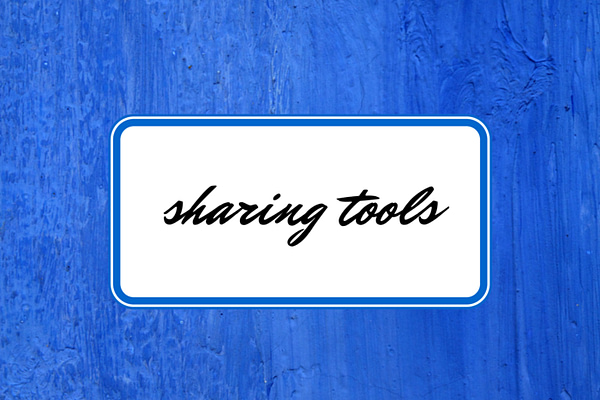
I was inspired by Bryan Alexander’s post on his Daily Practice: Tools of the Trade. If you aren't already familiar with Bryan, he is a higher education futurist who has quite an influence in our industry. He also wrote a kind post at the start of the new year about his recent visit on Teaching in Higher Ed:
Discussing the Future of Higher Ed with Bonni Stachowiak, A Podcaster Who Knows the Web
I enjoyed reading his appreciation for all the aspects of producing the show, such as taking the time creating show notes for each episode, transcripts, quote graphics, and then some. I had no idea that the transcript of his episode wound up being 17 pages. Amazing!
Back to Bryan's post about the tools he uses in his work. Here’s a treetop view of what I use to get my work done and facilitate other aspects of my life.
Writing
Two forms of writing require two different sets of tools:
- Longer-form writing (books, book chapters) – Microsoft Word. Despite all the bad-mouthing people do about Word, it is still the most fully-featured tool I know of for longer-form writing. A close second would be Scrivener on the Mac, but I just haven’t wanted to commit to the learning curve, since I know Microsoft Word like the back of my hand.
- Shorter-form writing (articles, blogs, etc.) – I often start writing in plain text using Ulysses. I write using a style called Markdown, which has text-based symbols to indicate where formatting belongs.
Speaking
When I speak at a conference or am hired for a keynote or workshop, the following combination of tools helps me streamline the tasks – to free me up for the creative thinking end of things:
- Recent episodes, topics I present on, and how to get in touch – WordPress – Beaver Builder.
- List of all past and upcoming speaking engagements – WordPress, Beaver Builder, and a wonderful web designer. Naomi completely streamlined how I curate all my speaking resources.
- Cover slide in various sizes – Canva (pro version allows for magic resizing)
- Slide design – inspired regularly by Nancy Duarte, use a combination of Microsoft PowerPoint and Canva for slide designs
- Brainstorming and open loops for upcoming talks – Evernote
- Planned interaction (polling) for during talks – Glisser
- Resources page (sample) – WordPress page with Pretty Link (easier/shorter link for people to type in)
- Travel coordination – I’ve outlined my approaches on episode 261 with Dave Stachowiak and in a blog post.
Teaching
I had better be careful with this one, or I could write a few books on the topic. I’ll narrow myself down to the first nine tools of the trade that come to mind:
- PollEverywhere – One of my favorite tools for in-class retrieval practice. I poll students with questions that either have a correct answer, or ask for their perceptions/opinions. They answer on their smart phones. We get to interact far more than times when I lecture without some kind of approach like this. I typically have them be anonymous to invite even more participation.
- Quizlet Live – Once you have a set of flashcards on Quizlet – you can play a game in class with students where they have to collaborate together to come up with the right matches/answers. It is lively and engaging. Here’s a post where I talk about my experiences with Quizlet Live more.
- Canvas – This is the LMS we use at my institution. It is the best one I’ve ever used, coming from having used Blackboard (still do, sometimes), Moodle, and WebCT in the past. I like how easy it is to integrate other tools inside of Canvas. For example, if I want to connect Quizlet with Canvas, that’s something I can do without having to possess admin rights in Canvas. There are a lot of conversations happening regarding who owns student data within Canvas right now that are outside the scope of this list of tools.
- Canvas Studio – This service makes videos interactive, while still offering the “protection” that the walls of the LMS can provide. For example, if I want to add a YouTube video within studio, students can interact with me and with each other, without having to deal with all the messiness that online commenting invites. You can also upload your own videos and essentially have your own YouTube-like channel with videos you can use across the LMS (and beyond).
- PowerPoint – As I mentioned earlier, I’ve been inspired for years by Nancy Duarte – especially her book Slideology. Another person who has made an impact on my design approaches most recently is Oliver Caviglioli.
- Pinboard – having a place to store digital bookmarks is essential to me for keeping examples I use current in my classes and continually engaging with my personal knowledge management system (PKM). Here’s an example of all the bookmarks I have tagged (categorized) related to my technology and leadership doctoral class I teach as an adjunct a couple of times a year: EDD 703. I also keep track of things I want to share with the Teaching in Higher Ed community. Topics like ungrading that I continue to want to learn more about are saved on Pinboard, as well.
- AcuityScheduling – I’ve written for EdSurge about how we can get people to join us for office hours. One approach is to make it super easy for students, using an automated scheduling tool like AcuityScheduling. I especially like it because I can use it for “regular” office hours, but it also integrates with Zoom and I can have people book online appointments using Acuity, too.
- Zoom – speaking of Zoom – it is the absolute best online meeting service I have ever used. And I’ve been using them since the 1990s… It’s not even a close competition with the rest of these kinds of online conferencing tools.
- Meeting Owl Pro – Integrating flawlessly with Zoom (plug and play) is the Meeting Owl Pro. It is a 360 degree, smart video conference camera that allows virtual guests to see everyone in the meeting room who is with you. And hear everyone in the room. The Meeting Owl Pro is definitely my best find of 2019.
Collaborating
I tend to mostly meet people where they are, when it comes to collaboration. Here are a few of the ways I collaborate on projects with others:
- Microsoft Teams – I set up a Team for each major project and department I lead. We can track who has committed to what actions using Microsoft Planner (within Teams). Sharepoint lets us sync the files we share with our local computers. If I put a file in that folder on my computer, it automatically syncs it back over to SharePoint/Teams.
- Dropbox Paper – This collaborative writing space is the best I have ever used. I can share a link to a Dropbox Paper file and others can collaborate – without needing to have a Dropbox or other account.
- Google Docs – My monthly EdSurge Office Hours advice column gets edited using Google Docs, thanks to the wonderful Jeff Young.
Getting Stuff Done
I not only could write an entire book about this topic – I have. Consider pre-ordering your copy of The Productive Online and Offline Professor to learn more about how I set goals, manage my tasks and calendar, keep track of projects and items I have delegated, and how I avoid crashing and burning (by not having backups of my computer data, or having secure passwords).
Learning
I follow the practice of Personal Knowledge Mastery (PKM) in my commitment to lifelong learning. Harold Jarche is the person I’ve learned the most about PKM from… He was a guest on episode 213 of the Teaching in Higher Ed podcast.
Here are some posts where I share more about PKM:
Link: All of the podcast episodes on the topic of PKM
Communicating
I focus on enabling communication tools to work for me, instead of me working for them. That means I keep as few of notifications as I can (while still being accessible to our kids’ school, for example).
- SaneBox – This service helps me keep my email from taking up more time than it deserves. It works on Gmail, Office 365, iCloud, or any email address.
- Mail – I use the regular mail client on my Mac.
- I avoid using email as a task manager and commit to achieving inbox zero once a day. Learn more about my approach way back on Episode 56. Discover even more about email management in my forthcoming book.
More email advice from an email emergency I experienced (how to organize folders, etc.)
Other communication tools
- Remind – An easy way to stay connected with my students, even when class isn’t in session. I can preschedule reminders about offsite visits, connect one-on-one with students – without sharing my personal cell number, and easily send photos, files, and other messages to an entire class.
- Disconnecting from the attention economy – Episode with Mike Truong – Teaching in the digital age.
- The kind of faculty to communicate with most often via my column on EdSurge.
I just finished reading Cal Newport’s Digital Minimalism: Choosing a Focused Life in a Noisy World. He recommends tangible practices we can use to help us get the most out of what digital tools have to offer, while leaving the rest behind. I highly recommend this book.
Your Turn
I would enjoy hearing what tools of the trade you are finding most essential these days…
Photo cred: Philip Swinburn on Unsplash




There are so many helpful tips in here! I love that you make time for lifelong learning and you seem very organized. That’s something I still need to work on even after all these years 🙂